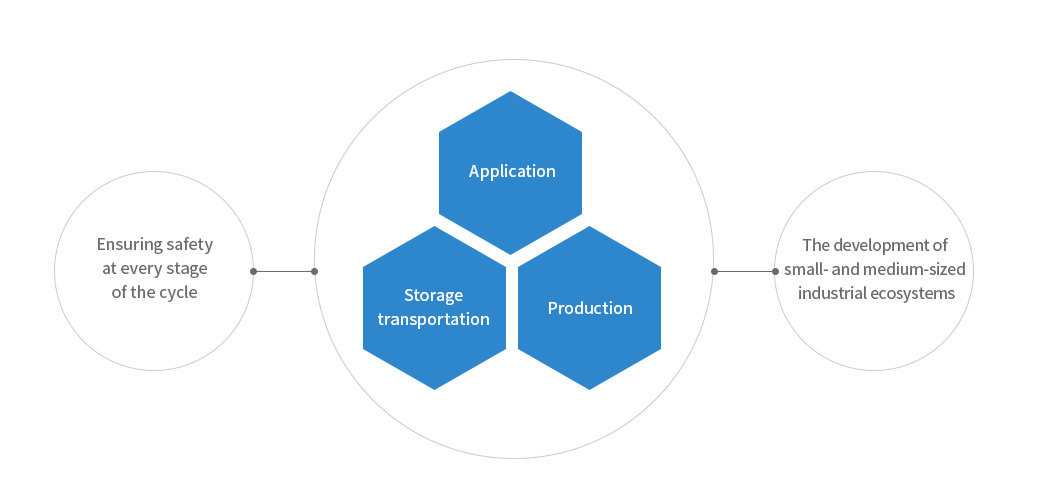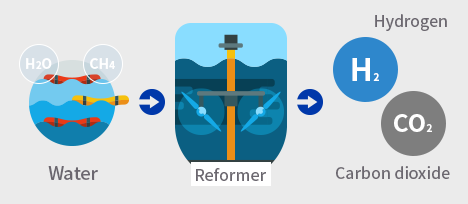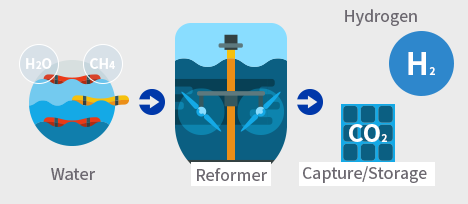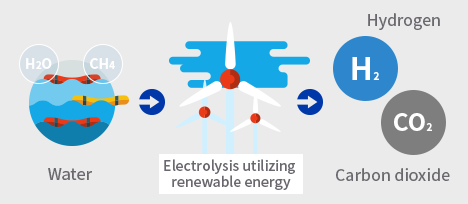Hydrogen
The Roadmap of the Hydrogen Economy
| Basic direction |

|
| Promotion strategy | Period of preparation for the hydrogen economy (2018–2022) | Economy diffuser for hydrogen (2022–2030) | Leading period of the hydrogen economy (2030-2040) | |
|
- Development of an industrial ecosystem for hydrogen - Construction of the various infrastructure - Completion of institutional and legal framework |
- Dramatic increase in the usage of hydrogen - Establishment of an extensive supply and demand system |
- Beginning of substantial overseas hydrogen production and water electrolysis - Establishment of a system of supply and demand free of carbon |
||
| Private roll allocation | Goverment |
- Financial assistance, deregulation, and significant infrastructure investment |
- Supplementation to the industrial environment and focusing on international standards |
- Fulfillment of a hydrogen society and securing global leadership |
| Civilian |
- Integration of key technologies and increased investment |
- Development of a commercial manufacturing system and business platform for hydrogen |
- Global market leadership and private-led market growth |
|
(Ministry of Trade, Industry, and Energy, 2019-01-17)
Hydrogen type
-
 Gray hydrogen
Gray hydrogen-
· It accounts for 96% of the world's hydrogen production, is the most prevalent hydrogen, and has a low production cost -
· Manufactured by reforming natural gas a method for extracting hydrogen from fire that involves -
· Heating and pressurizing the natural gas generated to high temperatures -
· CO2 generation
-
-
 Blue hydrogen
Blue hydrogen-
· Hydrogen that lowers greenhouse gas emissions by soaking up and storing carbon dioxide produced during the generation of gray hydrogen -
· Greener way of manufacturing than gray hydrogen -
· CO2 generation
-
-
 Green hydrogen
Green hydrogen-
· Environmentally friendly hydrogen created by electrolyzing water with electricity generated from renewable sources like solar and wind energy -
· Compensation for weakness of renewable energy, uneven production -
· Does not generate CO2
-





